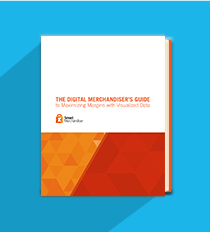
Online retailing is a vital part of the business landscape. Every year, online purchases and digital sales revenue increase. In 2013 alone, online sales topped $40 billion, growing at 16.9%, which outpaced the growth of the GDP. Having an online presence to connect with and sell to your customer base is essential.
To measure the success of an online store, retailers in the digital sphere must pay attention to different metrics than traditional retailers. What follows are five eCommerce analytics that serve as indicators of whether your store is on track to succeed in meeting revenue goals or fall short.
1. Bounce Rate
Bounce rate refers to the number of customers who visit your site and leave within a few seconds. A high bounce rate indicates a lack of engagement between visitors and the site itself.
Numerous factors play into having a high bounce rate. Often, it is caused by aspects of overall design, usability and layout, but it might also reveal that the linking text to your site was deceptive. If customers are leaving after only viewing one page or they are only staying a few minutes, it's time to reevaluate the usability and messaging of your site.
2. The Time Spent On The Site
The longer a visitor spends on your site, the more likely they are to engage with your store and make a purchase. Typically, longer average time spent on a site speaks well of your design, copy and overall usability.
3. Conversion Rate
Among ecommerce analytics, the conversion rate might be the most telling of your financial success, behind only your profit margin. Having several million visitors to your site is nice, but it’s ultimately useless if the visitors are not purchasing merchandise.
When tracking conversion rates, be sure to review all sources of visitor information. This includes not only web site hits, but also visitors gained via email campaigns and other social media platforms. This allows you to track the overall effectiveness of your customer marketing campaigns.
4. Cart Abandonment Rate
While bounce rate refers to customers who leave the site, cart abandonment rate refers to customers who browse the site, place items into their cart, and then leave the site without completing the sales process.
A high cart abandonment rate can point to several underlying issues. It could be a sign your checkout and payment processes are too complex. It can also be a sign your customers find your payment processing system untrustworthy. Or it may point to the customer deciding against the purchase due to hidden charges such as high shipping rates or sale taxes.
5. Gross Margin
Gross margin is integral to the success of your retail website. As Bigcommerce notes, “Keeping an eye on your gross margin, or the difference between your revenue and the cost of goods sold, is important as you look to reinvest profits for growth in the new year.” Gross margin is about more than just making money, as it can also show the success of your sale methods. It guides how you can grow and expand your business based on workable capital.
Direct Marketing News noted, “As marketers begin to understand the connection between site speed and user engagement, their focus is increasingly on engagement-specific metrics such as time to interact, time on site, and conversion rate. Combined they're indicative of the overall quality of the user experience and engagement with the site.” Paying close attention to the microcosms of your site's daily traffic will help you adjust your site for sales success.
Download the eBook to learn more!


